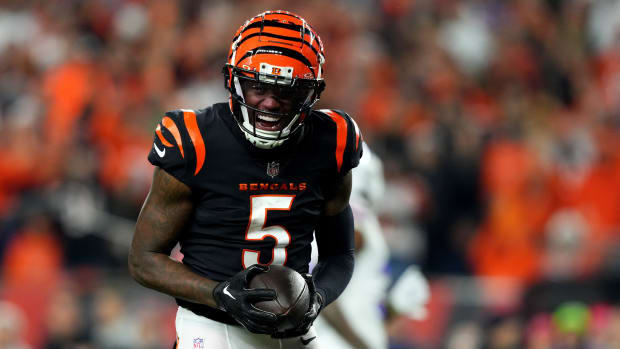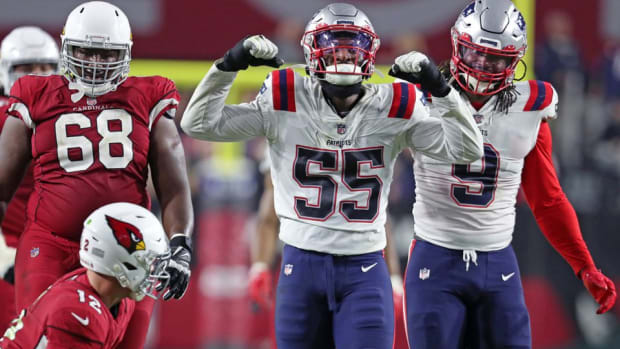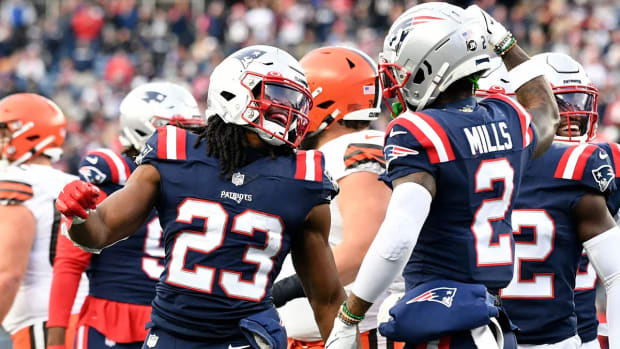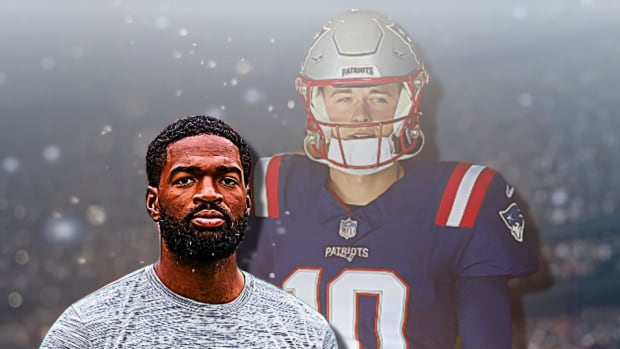Could Patriots Be Adopting Iowa State's Defensive Philosophy?
Ever since the New England Patriots lost key defensive players like Kyle Van Noy, Jamie Collins, Danny Shelton, and Elandon Roberts to free agency, a defensive philosophy change has been widely anticipated due to the turnover they were dealing with on defense.
Not long ago, I published an article focused on a new defensive philosophy for the Patriots, one that seemed to have a reasonable explanation to most of their defensive signings and draft picks this offseason. The article focused a lot on versatile pieces to the defense. In particular, two part-time linebackers, full-time safeties: Adrian Phillips and Kyle Dugger. Those players could fill very specific roles that were referred to in the article.
However, as we segway into the focus of the next piece, the focus will still be on the safety position. But this time, it's about utilizing them in a larger number than the norm.
The Patriots' safety room will be a big discussion throughout training camp, as New England is currently tied for the league-lead in rostering the most safeties. They are currently rostering nine. That doesn't include Joejuan Williams, who is rostered as a cornerback. However, he has reportedly been learning the safety position this offseason.
Of those nine and Williams, there is versatility as far as the eye can see. Plenty of those safeties can play in multiple spots, including deep, in the box, and man-to-man. Some of those headliners are Dugger, Phillips, Patrick Chung, and Terrence Brooks.
So where did this change in philosophy in New England come from, where they stacked their safety room with versatile playmakers? Well, it has to do with a team in college football, specifically in the Big 12.
Iowa State started a trend back in 2017. That trend was instead of marching out onto the field with two high safeties or one high safety, they elected to use three. That third safety occupies the middle of the field pre-snap, and the other two safeties are spread out to the hashes. That middle safety acts almost as a hybrid mike linebacker and can frequently find himself in man coverage situations versus a running back or coming up and helping out against the run.
Here's is how the three-safety technique benefited Iowa State and teams like Baylor and Clemson recently, which is best described by PFF:
A perennial Big 12 doormat, Iowa State saw its defensive EPA/play drop from 0.097 in 2016 to -.119 on first and second down when it played a base three-safety look. This was a huge turnaround. While the team hasn't quite reached that peak in the two years since, it still produced a negative EPA/play in both campaigns.
Programs like Baylor and Clemson turned to this structure in 2019 for big results on early downs as well. Baylor went from .107 EPA/play in 2018 to -.155 in 2019. Playing with a three-safety shell allows for a greater number of possible coverages a team can get into from the same look. Clemson, Iowa State and Baylor each played four different coverages on early downs for at least 60 snaps last season. For reference, LSU played two. There’s such a wide variety of things you can get into from that three-safety set.
With so many safeties on this year's Patriots roster and a scheme change potentially coming, this philosophy could explain why New England stashed so many players (many who perform the same functions) at the same position this offseason.
With three high safeties, a team can very easily run multiple coverage variations, all while giving the same exact look. The idea of having multiple coverage variations, all possibly stemming from one look, would probably be an interesting thought for Belichick. Along with the fact that this scheme would allow him to utilize the more versatile, athletic players he picked up this offseason and have them defend the run as well.
The concept is very focused on crowding throwing zones and dropping back eight players into coverage. However, one caveat that could make the difference between this scheme succeeding in its new venture to the pro level or failing is the fact that only three defensive lineman are up on the line of scrimmage. With only three defensive lineman, coordinators must pay close attention to this area for the entire scheme to work. Without proper execution on the defensive line and close attention by coaches to stress which gaps each player needs to fill, an opposing team will run all over that scheme. Even worse, a good quarterback could have all the time in the world to sit back and find the open holes in the zone.
However, even with those pitfalls, no one else in the NFL may be more equipped to mitigate them than Belichick. In order to counter-balance these, Belichick would need to stress his classic "Do your job" motto. If everyone, especially on the defensive line, understands their assignments and executes them, this scheme should be able to work well for the Patriots. Second, Belichick would need to create confusion at the line of scrimmage (which is another thing he does very well). By designing many variations of bluff blitzes, different pass-rush packages, and stunts, the defense would be able to find ways to get to the quarterback with three-man pressures and still crowd the air with eight defenders.
Additionally, with all the athleticism and versatility these safeties have (ie Phillips, Dugger), New England could still fair really well against the run and run-pass options in this scheme (although the plan will have to change slightly post-snap for RPOs). As long as everyone understands their reads, assignments and their responsibilities against the run, the Patriots could fair very well against the run in this scheme.
While Iowa State runs this scheme almost always it seems, New England would probably only turn to it on occasion. Especially on long passing downs, where it would be most effective. The problem with running this scheme all the time would be the fact that NFL quarterbacks would likely be able to figure out how to attack this scheme at some point in the game. Only on occasion with different blitzes and stunts, however, would this scheme turn a quarterback's brain into scrambled eggs.
If New England decided to implement this, I would keep close eyes on Phillips, Dugger, and even Williams. Phillips and Dugger would likely be the top choices to play that middle of the field safety role and really succeed at it. Williams would be intriguing as well. While his safety skills are largely unknown to the public, Williams' man coverage skills in college were top notch and he also appeared strong in run support. That would bode well for that position and could be a niche for him as he finds his way into a bigger role in the NFL.
Regardless of whether the Patriots attempt this strategy at all, expect them to definitely use their safeties in all kinds of different, exciting ways. Expect Dugger and Phillips to line up all over the place. Expect big and new things from this New England safety room and defense all together.





